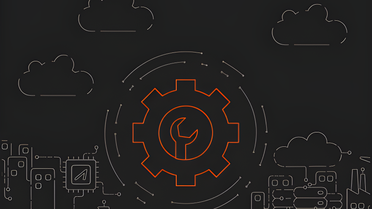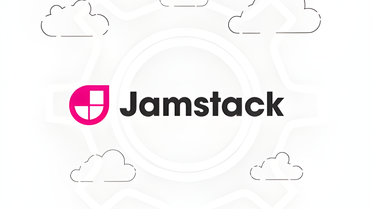When Fastly recently published data showing their edge delivers 57% faster TTFB than Akamai, they were fighting yesterday’s war. While they optimize the horse-and-buggy of web infrastructure, a new paradigm has emerged—one where 280% performance improvements are no longer miracles, but rather a reflection of the architecture. Welcome to the modern web platform revolution, where comparing CDNs is like debating telegraph speeds in the age of fiber optics.
The Numbers That Redefine Possible
Fastly’s analysis of Google’s Chrome User Experience Report revealed performance advantages over Akamai, which they celebrated as significant: a 57% faster Time to First Byte, a 17% faster Largest Contentful Paint (LCP), and an 18% faster First Contentful Paint(FCP). In the context of CDN evolution, these are meaningful gains. In the context of what’s actually possible with modern web infrastructure, they’re rounding errors.
Consider what happens when enterprises migrate from Akamai to a true web platform. The same metrics that Fastly trumpets as victories become modest gains in comparison. Time to First Byte improves by 280%—nearly five times what Fastly achieved. First Contentful Paint accelerates by 43%, more than double Fastly’s gains. Largest Contentful Paint, critical for user experience, improves by 33% compared to Fastly’s 17%.
These aren’t cherry-picked numbers from synthetic tests. They’re real-world results from enterprises that spent decades with Akamai before discovering what modern architecture makes possible.

The Dafiti Transformation: The Path to Market Dominance
In our well-known success story, Latin America’s largest fashion e-commerce platform tells a story that synthetic benchmarks can’t capture. Running on Akamai CDN, Dafiti faced page load times of 18.33 seconds in an industry where customers abandon sites after three seconds.
The conventional wisdom suggested incremental improvements. Maybe shave off a second here, optimize an image there. The Fastly playbook would have celebrated a 50% improvement as revolutionary. Instead, Dafiti chose transformation over optimization.
Following migration to Azion’s Web Platform, load times dropped to 2.44 seconds—an 86% improvement that fundamentally redefined their business. But speed was just the beginning. Infrastructure costs dropped by 45%, freeing capital for growth. The transformation enabled the platform to handle millions of customers with ease, establishing a solid foundation for continued growth and expansion in the competitive Latin American e-commerce market.
This wasn’t achieved through clever caching strategies or network optimization. It required rethinking the fundamental architecture of web delivery.
When Decades of Loyalty Meet Modern Reality
The financial services industry doesn’t change vendors lightly. When a significant financial institution ended its decade-plus exclusive relationship with Akamai, initiating a shift towards embracing a modern platform in some products and expanding its use, it sent shockwaves through the industry. This wasn’t a startup chasing the latest technology—it was a conservative enterprise with stringent requirements and massive scale.
The numbers tell the story Akamai doesn’t want told. The Time to First Byte improved by 280%, transforming the user experience in an industry where every millisecond of delay costs millions. Total Blocking Time—the metric that actually correlates with user frustration—improved by 270%. The Core Web Vitals that Google now uses to rank sites jumped from failing to exceptional.
Performance Metrics: Before and After Migration
Akamai Azion Improvement━━━━━━━━━━━━━━━━━━━━━━━━━━━━━━━━━━━━━━━━━━━━━━━━━━━━━━━━━━━TTFB 1.047s 0.275s 280% ↑FCP 560ms 390ms 43% ↑LCP 2.0s 1.5s 33% ↑Speed Index 3.477 2.591 34% ↑Total Blocking 485ms 130ms 270% ↑━━━━━━━━━━━━━━━━━━━━━━━━━━━━━━━━━━━━━━━━━━━━━━━━━━━━━━━━━━━What makes this transformation remarkable isn’t just the magnitude of improvement but the ease of achievement. The complex, expensive infrastructure that Akamai had built over a decade was surpassed in weeks. No massive re-architecture. No army of consultants. Just the natural advantage of modern web platform architecture over legacy CDN design.
The Retail Giant’s 100-Application Revolution
Perhaps the most audacious migration came from another Akamai stalwart—a major retail conglomerate running over 100 mission-critical applications. This decade-long Akamai customer faced quotes of six to nine months and millions in professional services for migration. The risk assessments alone took months.
Yet in 15 days—not months, days—the entire portfolio migrated to Azion’s Web Platform. Zero downtime. No customer impact. The impossible had become routine.
The performance gains were immediate and dramatic. Transaction processing improved by 92%. Infrastructure costs decreased by 30%, resulting in annual savings of tens of millions. But the real transformation was in capability. Applications that had been constrained by CDN limitations suddenly had access to true compute at the edge, enabling features that were previously impossible.
The Architecture Gap: Why 5x Differences Exist
Understanding why Azion achieves 280% improvements, while Fastly manages 57%, requires examining the fundamental architectural gap between CDNs and modern web platforms.
Traditional CDNs, whether Akamai’s first-generation or Fastly’s “modern” approach, operate on the same basic principle: cache and deliver. They’re sophisticated caching layers, optimized for static content delivery in a world that’s increasingly dynamic. When Fastly celebrates its 57% TTFB improvement, it’s essentially saying it’s built a better cache.
Modern web platforms operate on entirely different physics. Instead of caching content at the edge, they compute at the edge. Instead of being sent back to the origin servers, requests are processed locally. Instead of optimizing the round trip, they eliminate it entirely.
Traditional CDN Approach
// Every dynamic request goes back to originapp.get('/api/user/:id/recommendations', async (req, res) => { // This runs on your origin server, not at the edge const userId = req.params.id
// Database call from origin (high latency) const userData = await db.query('SELECT * FROM users WHERE id = ?', [userId])
// Complex computation at origin const recommendations = await computeRecommendations(userData)
// Response travels from origin → CDN → user res.json(recommendations)})
// Result: 800-1200ms latency depending on user locationAzion Web Platform Approach
// Compute happens at the edge, near the useraddEventListener('fetch', (event) => { event.respondWith(handleRequest(event.request))})
async function handleRequest(request) { const url = new URL(request.url) const userId = url.pathname.split('/')[3]
// Edge KV storage - data replicated globally const userData = await EDGE_KV.get(`user:${userId}`, 'json')
// Compute at edge - runs within 50ms of user const recommendations = computeRecommendations(userData)
// Response generated at edge location return new Response(JSON.stringify(recommendations), { headers: { 'Content-Type': 'application/json' } })}
// Result: 50-200ms latency globallyThis isn’t an incremental improvement—it’s a fundamental reimagining of how web applications work. When your application logic runs within milliseconds of your users, when your data processing happens at the edge, when your entire stack is distributed globally, the performance gains aren’t arithmetic—they’re exponential.
Key Architecture Differences
| Feature | Traditional CDN | Azion Web Platform |
|---|---|---|
| Primary Function | Cache & Deliver | Compute & Process |
| Edge Capabilities | Static content only | Full application logic |
| Origin Dependency | Required for all dynamic content | Optional - can run entire apps |
| Latency | Origin RTT + cache lookup | Edge processing only |
| Scalability | Limited by origin capacity | Infinite edge scaling |
| Innovation Speed | Months to deploy changes | Minutes via API |
The Business Reality Check
Performance improvements tell only part of the story. The business transformations enabled by modern web platforms extend far beyond milliseconds saved.
Dafiti didn’t just get faster—they got profitable. The 45% reduction in infrastructure costs was directly reflected in the bottom line, allowing for expansion instead of supporting legacy systems. The improved user experience drove conversion rates that transformed their business model.
The financial institution didn’t just improve its Core Web Vitals—they leapfrogged competitors. In an industry where customer acquisition costs hundreds of dollars, the improved user experience drove retention that translates to billions in lifetime value.
The retail conglomerate didn’t just migrate applications—they transformed their competitive position. The agility gained from modern infrastructure enabled them to launch new services in days instead of months, to experiment without fear, to innovate at market speed.
The Migration Reality
One of the most persistent myths in infrastructure is that transformation requires disruption. The hundred-application retail migration definitively shattered this myth.
Traditional CDN Migration Timeline━━━━━━━━━━━━━━━━━━━━━━━━━━━━━━━━━━━━━━━━━━━━━━━━━━━━━━━━━Month 1-2: Planning & Architecture ReviewMonth 3-4: Configuration MappingMonth 5-6: Testing & ValidationMonth 7-8: Phased MigrationMonth 9: OptimizationTotal: 9 months, high risk, significant downtime
Azion Web Platform Migration Timeline━━━━━━━━━━━━━━━━━━━━━━━━━━━━━━━━━━━━━━━━━━━━━━━━━━━━━━━━━Day 1-3: Automated configuration importDay 4-7: Parallel testingDay 8-14: Zero-downtime migrationDay 15: Complete & optimizedTotal: 15 days, zero downtime, immediate gainsModern web platforms have solved the migration challenge that keeps enterprises trapped in legacy infrastructure. The tools, expertise, and processes now exist to move even the most complex environments quickly and safely. The risk has shifted—it’s no longer in moving, it’s in standing still.
The CDN Comparison Trap
Fastly’s comparison with Akamai represents the last gasp of an obsolete paradigm. While they debate percentage improvements in caching efficiency, the market has moved on to transformation. It’s like telegraph operators arguing about words per minute while everyone else has switched to broadband.
The trap lies in accepting the CDN frame of reference. When you’re comparing CDNs to CDNs, 57% seems impressive. When you’re comparing CDN to a modern web platform, 57% seems insufficient. The enterprises achieving 280% improvements aren’t optimizing their CDN strategy—they’re abandoning it entirely.
This isn’t about Azion versus Fastly versus Akamai. It’s about recognizing that the entire CDN category has become a constraint on modern application architecture. The companies still debating CDN performance are having the wrong conversation.
The Future Has Already Arrived
While Fastly and Akamai debate incremental improvements, enterprises on modern web platforms are building the impossible. Real-time personalization at a global scale. Machine learning inference at the edge. Application logic that runs within milliseconds of every user on Earth.
The 280% performance improvement is just the bare minimum. The real advantage comes from capabilities that CDNs simply cannot provide. When your platform computes instead of caching, when it processes instead of proxying, when it thinks instead of just delivering, entirely new application architectures become possible.
The enterprises featured here—Dafiti’s resurrection, the financial giant’s transformation, the retailer’s revolution—aren’t edge cases. They’re the early majority. The migration from CDN to web platform is accelerating, driven by results too dramatic to ignore.
The Competitive Imperative
In a world where Google ranks sites by Core Web Vitals, where users abandon slow applications, and where infrastructure costs can make or break profitability, the choice between 57% and 280% improvement isn’t really a choice at all.
The enterprises clinging to CDN architecture—whether Akamai’s legacy or Fastly’s iteration—face a stark reality. Their competitors are achieving 5x their performance gains. Their costs are 45% higher. Their innovation velocity is constrained by architectural limitations that others have already transcended.
The question facing technology leaders isn’t which CDN to choose. The question is whether to remain in the CDN paradigm at all. When your competitors are achieving 280% improvements while you celebrate 57%, the writing isn’t just on the wall—it’s a neon sign.
Conclusion: The Revolution Is Here
Fastly deserves credit for quantifying its improvements over Akamai and for pushing the CDN industry forward. In the context of incremental optimization, 57% is a notable achievement. But the context itself has become obsolete.
When enterprises achieve 280% improvements, when decade-long Akamai relationships end in weeks, when hundred-application migrations complete in days, we’re not witnessing evolution—we’re witnessing revolution. The modern web platform has made the CDN paradigm as obsolete as dial-up internet.
The data is unequivocal. The enterprise transformations are undeniable. The architectural advantages are insurmountable. While others debate percentage points, forward-thinking enterprises are achieving transformational results.
The question isn’t whether to optimize your CDN, it’s whether to transcend the CDN paradigm entirely. In a world where 280% improvements are achievable, settling for 57% isn’t just suboptimal, it’s a choice to fall behind.
The future doesn’t belong to better CDNs. It belongs to platforms that make CDNs irrelevant. That future has already arrived. The only question is when you’ll join it.
Ready to join the enterprises achieving 280% performance improvements? Contact our experts for a migration assessment and discover why the world’s most demanding companies are leaving CDNs behind.








